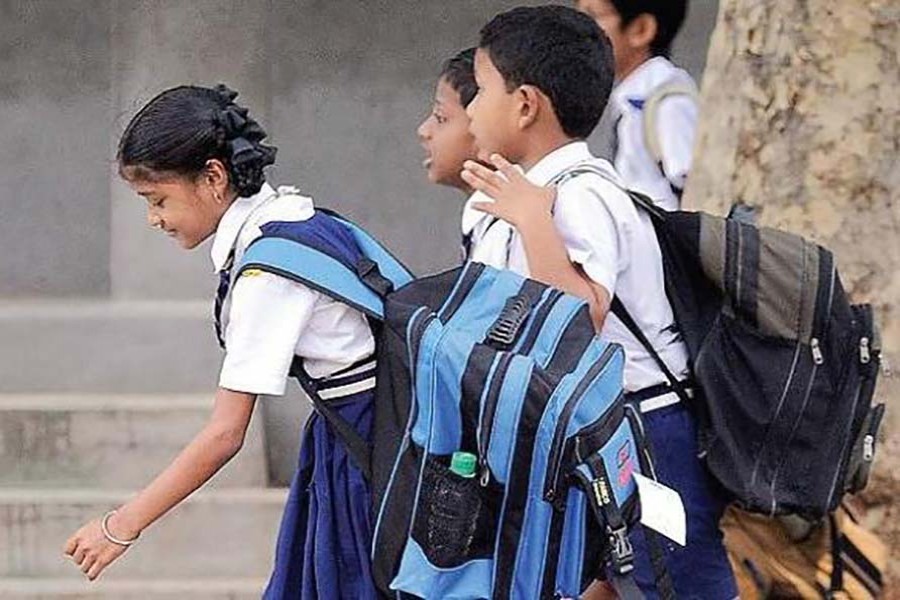That Bangladeshi households spend more money on children's education compared to those of the neighbouring countries may apparently give the impression of good parental attention. The reality, however, is that it is the reliance on private education system that rips apart the parents'/guardian's pocket. The UNESCO Global Education Monitoring Report 2022, released recently, says Bangladeshi households bear the lion's share (71 per cent) of the total education-related spending of their children. The report, referring to the preference of households for private schools to government schools, states that the fees and expenses of the private sector-run schools are three times higher than those of the government schools. The expenditure is almost nine times higher in the private kindergartens. The UNESCO, in association with BRAC launched a national programme to study private sector's role in education in South Asia.
According to the report, Bangladesh has the largest number of students in the private sector in South Asia. Some 94 per cent of the country's secondary school students are from private institutions. Sri Lanka has the highest number of private school students in pre-primary education (80 per cent), followed by Bangladesh (55 per cent). On an average, Bangladesh has the most private sector dependence in the education sector. The report found that despite making great progress in access to education in South Asia, investment in education by the governments has remained insufficient. Except for Bhutan, no other country in the region has ever spent anywhere near 15 per cent of the total government spending or 4.0 per cent of the GDP on education. During the 10-year time span from 2010 to 2020, Bangladesh, Pakistan and Sri Lanka spent less than 2.5 per cent of their total GDP on education. Quality and relevance of education has therefore become a concern, says the report.
The all important question here is, what lies behind very high intake of young learners by the country's private education system. The substandard, even deplorably poor standard of education in the government institutions ---at primary and secondary levels --- has made it almost indispensable for most households to opt for private institutions. For well-off families, the issue may not pose any difficulty. But families who are barely in a position to dish out hefty amounts as education expense in private institutions are compelled to do so. Meeting high expense often forces them to ration on many necessary spending.
Education offered by government institutions has deteriorated in the past two-three decades. This, according to experts, is largely attributable to the incompetence and inadequate teaching skills of teachers in most such institutions. As a result, it is the sheer deficiency to keep up with the expanding horizon of education globally that has rendered these institutions practically unfit to take care of the young learners. The ministry of education, aware of the severe limitations, occasionally takes up pilot projects on teachers' training, but the stray efforts are far from convincing parents not to opt for private schools. There is no way out but to revamp the education system.


